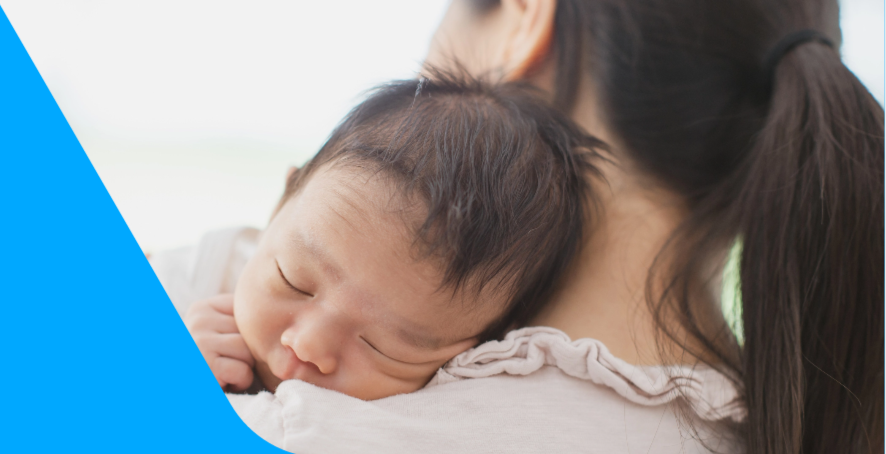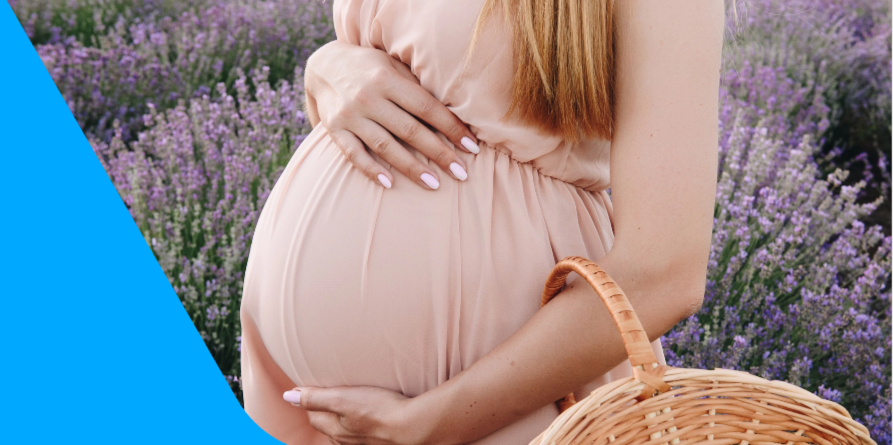What is Babywearing?
Babywearing can sometimes seem like a new, hot trend in caregiving, but it’s been around for centuries—likely as long as there have been babies. While there may be new gadgets available to every new generation of parents and caregivers, the concept of babywearing never changes.
Babywearing is exactly what it sounds like: wearing your baby. While caregivers in ancient societies resorted to babywearing for practical reasons, modern moms, dads, and families may also choose to babywear as part of a caregiving approach like attachment parenting.
How to Wear Your Baby Safely
Babywearing is safe for your little one if using the correct technique and gear. The primary consideration is to ensure baby is secure in the carrier without being tight, constricted, or compressed.
The optimal positioning for healthy hip development in the carrier is the “M” position. It is described as the “M” position as the tops of the letters of the “M” are the knees and the bottom point of the “M” is the buttocks. In this position, the baby’s thighs are spread around the caregiver’s torso and the hips are bent so the knees are slightly higher than the buttocks with the thighs supported.
Depending on the type of carrier chosen, there are different safety considerations:
-
Sling carriers: Slings hold baby in a pocket of fabric between the wearer and the carrier. The babywearer should ensure their arms are free, baby is in a natural position, and the sling’s bottom is securely tucked.
-
Wrap carriers: Wraps are the least structured of all babywearing options—essentially a long piece of fabric. Ensure you follow the steps provided with your wrap for correct placement, tying, and securing.
-
Structured or rigid carriers: Securing a structured carrier to the wearer is the first (and most important) part of using this type of carrier safely. Before you clip baby into the carrier, ensure that their positioning is natural—and that you don’t tighten them too much.
Until baby can support themselves, it’s imperative to ensure the hips and back are adequately supported. No matter which method you choose, practice makes perfect and will help ensure you and your little one both enjoy the benefits of babywearing.
The Benefits of Babywearing
The benefits of babywearing aren’t strictly anecdotal. Studies have shown that there are myriad benefits to babywearing for baby, mom, and any caregiver who chooses to try it.
-
Strengthens secure attachment. This isn’t just when it comes to mom and baby, it’s for anyone who chooses babywearing. The closeness and warmth promote the release of oxytocin in both baby and caregiver’s wearing baby. Oxytocin is sometimes called “the love hormone” since it is produced during social bonding moments.
-
Lessens crying and fussing from baby. Whether or not this is related to extra attention or oxytocin is unclear, but carrying a baby for just three hours a day has been shown to reduce crying in infants up to 54%.
-
Soothes both mom (or wearer) and baby. Everyone needs soothing touch sometimes, even if no one is crying. Baby wearing can be helpful for bonding and can be a calming experience for both the mom and baby. The continuous motion of being worn also soothes newborn infants, thanks to easing the transition from womb to world.
-
Reduces feeding-related issues. When baby is worn during feeding, they are upright or at an angle with their head above their tummy. With baby upright soon after eating, spit-up and other gastric issues are less likely to occur than when reclined soon after feeding time. Staying upright can also help prevent ear infections caused by gastric reflux depositing gastric juices into baby’s middle ear. Breastfeeding moms will also find babywearing a convenient option for on-demand feedings.
Bonding with baby is one of the joys of caregiving. Babywearing affords this and so many more benefits for mom and baby (and any other caregiver who chooses babywearing).








